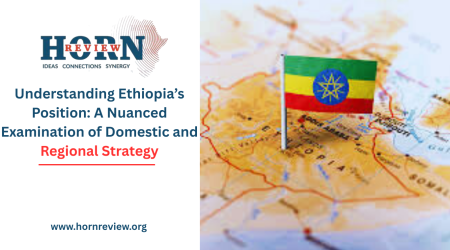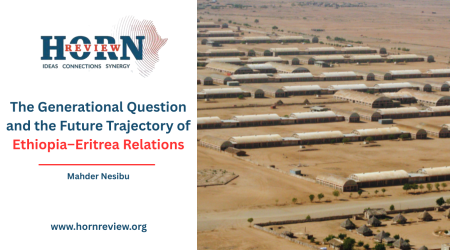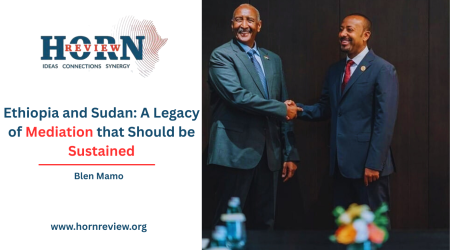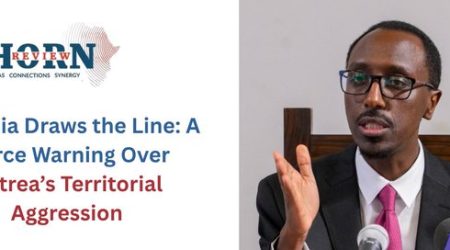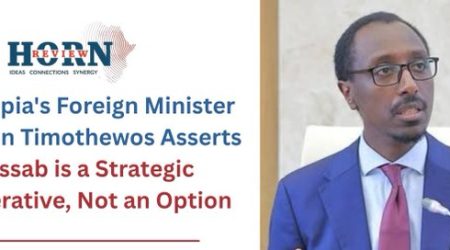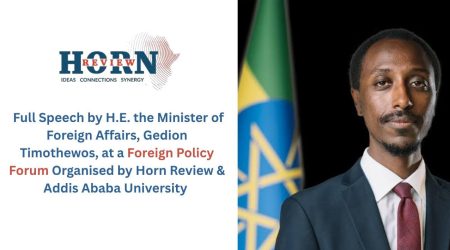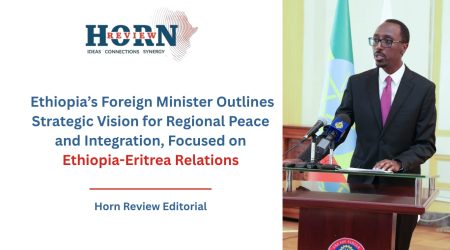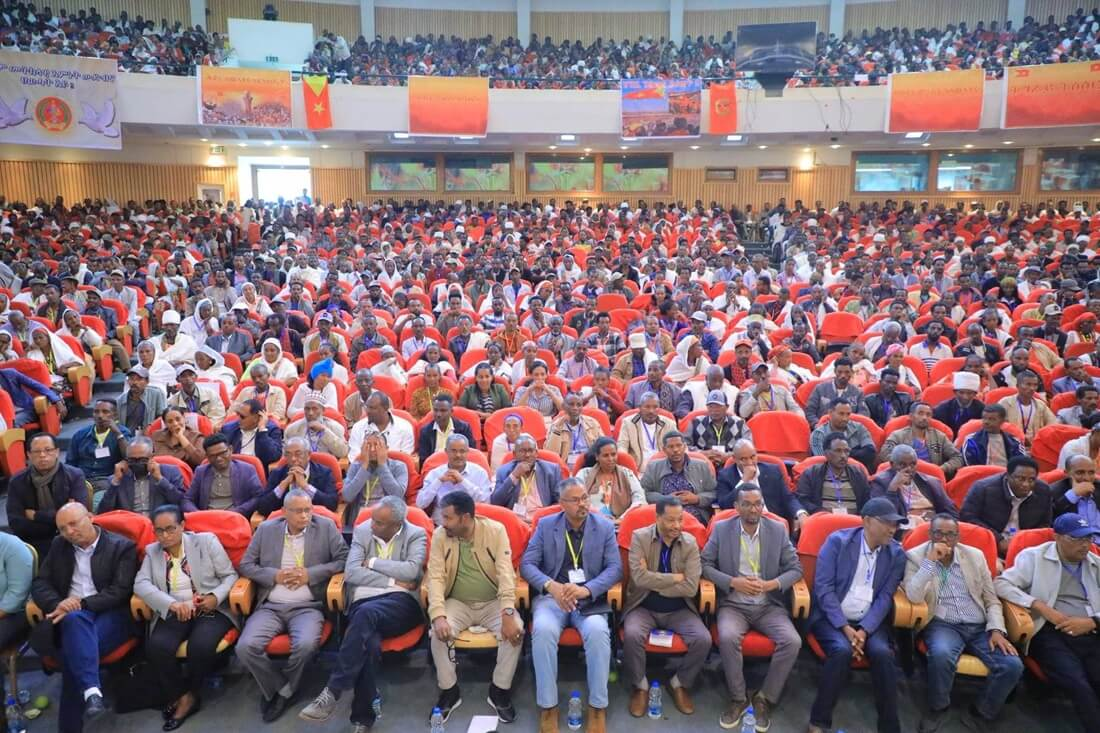
9
Oct
Who Broke The Code? TPLF’s “Defiant” Conference & The Betrayal Of A Costly Peace Process
The Pretoria Peace Agreement , signed in 2022, was designed to serve as Ethiopia’s binding framework for durable peace,anchored on the disarmament of the Tigray Defense Forces (TDF), restoration of federal authority, inclusive interim governance, and national recovery after the devastations of the Tigray conflict. Yet, the Tigray People’s Liberation Front (TPLF), under Debretsion Gebremichael’s hardline faction, has persistently violated this code, elevating itself from defeated insurgents to unaccountable actors operating outside the constitutional order.
The “National Conference of the Tigrayan People” in Mekelle was attended by above 3,000 carefully selected loyalists from the TPLF, the Tigray Interim Administration (TIA), and TDF ranks. It was not a forum for reconciliation but a platform for renewed defiance. The communiqué issued was replete with inflammatory rhetoric toward the federal government, demanding full implementation of Pretoria while disregarding the group’s own consistent violations. Boycotted by reformist leaders such as Getachew Reda, the conference exposed TPLF’s recalibrated strategy: to consolidate power through militarized defiance, exploit Pretoria’s weaknesses for political legitimacy, and prepare for “unilateral action” that risks reigniting conflict. TPLF broke the very code it enrolled , initiating war in November 2020, denying disarmament, and now politicizing theater to control accountability.
This politics of theater was not an appeal for concord but a declaration of war on the constitutional order.The TPLF has aggressively broken five foundational codes of the Pretoria Agreement, using the cover of a peace deal to pursue a strategy of militarized, sovereign defiance.
1.TPLF Broke the Disarmament Code:Retaining TDF as a Private Army Glorified as Tigray’s “Pillar”
TPLF shattered Pretoria’s Article 6 (mandatory TDF disarmament within 30 days) and FDRE Constitution Article 51(6) (federal monopoly on defense) by hoarding above 200,000 armed personnel, arming youth militias, and seizing territories.This is not self-defense ,it is a parallel military authority that undermines sovereignty.
The Mekelle conference formalized this defiance by glorifying the TDF as “the pillar and core of Tigray’s heroism,” pledging unconditional support with no mention of demobilization. Furthermore, Debretsion’s rhetoric,”We Tigrayans have never invaded others”,hypocritically masks TDF’s war initiation via 2020 Northern Command assaults, while signaling readiness for “unilateral action” if Pretoria stalls.
Through this rhetoric, TPLF’s strategic intent became unmistakable: to preserve the TDF as a private army securing their March 2025 internal coup and to transform the interim administration into an instrument of factional rule. The absence of enforcement mechanisms within Pretoria allowed this militarization to continue unchecked, eroding the credibility of the peace process and threatening national stability.
2.TPLF Broke the Human Rights Code:Repression Framed as “Resistance”
TPLF trampled Pretoria’s Article 4 (human rights protections) and FDRE Articles 14–28 (rights to life, liberty, assembly) through extrajudicial killings, disappearances, and protest sieges in Southern Tigray (Raya), Southeastern Zone, Tembien, and Northwestern areas since September 2025. Masked TDF-backed TIA soldiers crushed self-governance demands, violating constitutional self-determination .
The conference rhetoric compounded these violations by glorifying “resistance against treasonous groups,” a euphemism for silencing reformist voices and community leaders aligned with peace and reintegration. This manipulation of repression into “unity” is typical of the TPLF’s overall political approach: to maintain power through fear and exclusion, but present opponents as enemies of the Tigray cause.
By granting TPLF extensive latitude in the TIA with little accountability mechanisms, the Pretoria format inadvertently enabled such abuses. The resulting culture of fear stifled youth activism, civic association, and diaspora mobilization,all critical to sustaining peace over the long term.
3.TPLF Broke the Sovereignty Code:Eritrean Overtures as Instruments of Subversion
The TPLF has also recklessly jeopardized Ethiopia’s external stability. TPLF defied Pretoria’s stability imperatives (Art. 3) and shattered Ethiopia’s sovereignty, protected under FDRE Article 51(8)(federal foreign affairs monopoly), through overt engagement with Eritrean actors, including Asmara meetings. This act of parallel diplomacy risks escalating regional instability and echoes the group’s betrayal during the 1998 Badme conflict.
The conference amplified this defiance by calling for “strengthened people-to-people ties” with Eritrea, implicitly positioning the TPLF as an autonomous diplomatic entity outside federal authority. This maneuver exposes a calculated attempt to use Eritrea as a strategic counterweight in disputes over Western Tigray and to signal regional defiance under the guise of cultural cooperation.
Such a practice dilutes Ethiopia’s single constitutional mandate to engage in foreign relations and can get the country entangled in new regional hostility. Sovereignty is protected today with collective diplomatic scrutiny and firm in-house enforcement to prevent local actors from engaging in parallel foreign relations.
4.TPLF Broke the Governance Code:The March 2025 Coup and Conference as Tools of Power Centralization
TPLF obliterated Pretoria’s Article 10 (inclusive TIA via dialogue) and FDRE Article (HoF-led interim intervention) with their March “coup.” Pro-Debretsion generals dismantled TIA structures in Mekelle/Adi Gudom, ousting Interim President Getachew Reda and purging four TDF leaders,actions that drew condemnation from the AU, EU, and US. The move marked the full subversion of TIA’s intended inclusivity.
The subsequent October conference perpetuated this illegality, issuing “directives” to the TIA for “urgent reforms” against “rent-seeking,” thereby rubber-stamping Tadesse Wereda’s hardline presidency without required House of Federation (HoF) input or representation from opposition groups. The National Electoral Board of Ethiopia’s (NEBE) rulings rejected the reinstatement of the TPLF due to “violence,” noting that the conference, held despite these “special conditions” and violating Proclamation 359/1995,(System for the Intervention of the Federal Government in the Regions) was effectively an illegal farce.
TPLF’s new strategic goal is transparent: to transform the TIA into a partisan vanguard, using the conference’s narrative of urgency to delay elections, blame the federal center for administrative stagnation, and retain power through perpetual, unaccountable transition.
5.TPLF Broke the Federalism Code:Monopolizing Tigray’s Identity through a Parody of Statehood
Ethiopia’s federal structure, founded on voluntary unity and democratic self-administration, has been distorted by TPLF’s monopolization of Tigray’s political space. TPLF violated Pretoria’s transitional intent (Art. 10) and FDRE Article 62(3)(elected self-determination) by monopolizing Tigray as a TPLF statelet, excluding youth/diaspora and splinter groups since the 2023 split.
The Mekelle conference epitomized this: Framed as Tigray’s “national unity” assembly, it equated TPLF with the people, issuing appeals to Ethiopians, civil society, and internationals while glorifying “historic achievements.”Debretsion’s assertion of “dialogue over confrontation” concealed renewed demands for TPLF’s political restoration and dismissal of legitimate federal authority. Through this narrative, TPLF continues to internationalize its victimhood, appealing to external entities to “pressure” the federal government while undermining the very peace framework it professes to uphold.Pretoria elevated TPLF by legitimizing their TIA amid war crimes, turning a surrender into state-like leverage.
This distortion of federalism replaces democratic pluralism with factional rule, both in contravention of the Constitution and Pretoria’s transition spirit. Maintenance of Ethiopia’s national unity therefore requires revival of political diversity and re-creation of constitutional dichotomies between federal authority and regional autonomy.
The Mekelle meeting revealed TPLF’s concerted post-coup strategy: perpetuating militarized domination in the cover of “self-defense,” reconceptualizing repression as unity, and employing diplomatic maneuvers to reassert diminishing influence. Appeals to “years of blockade” seek to extricate the group from responsibility for initiating war, while threats of “unilateral action” signal groundwork for future insurgency in case boundary or reintegration conflicts are not resolved.
This is not a peace position but one of calculated provocation. Pretoria broke the code for TPLF by granting undue elevation (TIA without disarmament teeth), victimizing Ethiopia’s victor.
TPLF broke the code boldly, repeatedly, and now audaciously in Mekelle. Their conference isn’t unity; it’s a declaration of war on peace. Ethiopia’s path to durable peace depends on firm, lawful enforcement of the Pretoria framework. Sanctioning violations, reinforcing institutional oversight, and ensuring that regional governance aligns with the federal constitution are essential to preserving national unity and preventing regression into conflict.
By Bethelhem Fikru, Researcher, Horn Review

